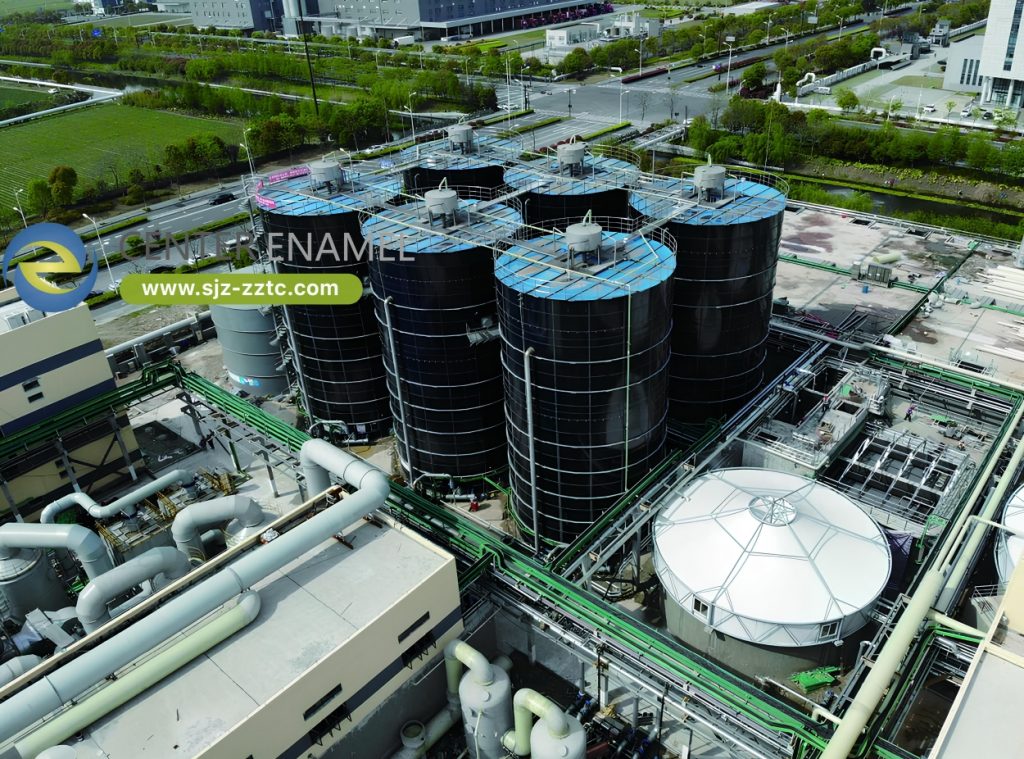Center Enamel Provides the Best Anaerobic Reactor Process for Food Waste

In today’s sustainability-focused environment, the efficient treatment of food waste is not only an environmental imperative but also an opportunity for energy recovery and resource optimization. Center Enamel has emerged as a leader in this domain by providing a state-of-the-art anaerobic reactor process specifically engineered for food waste. Our advanced technology transforms organic waste into renewable energy while minimizing environmental impact, and our solution is designed for industries and municipalities that demand reliable, cost-effective, and environmentally responsible waste management.
Anaerobic digestion is a biological process that decomposes organic matter in the absence of oxygen. In the context of food waste, this process converts biodegradable materials into biogas—a mixture primarily composed of methane and carbon dioxide—which can be harnessed as a renewable energy source. The process also produces digestate, a nutrient-rich byproduct that can serve as an organic fertilizer.
Center Enamel’s anaerobic reactor process is specifically optimized for the variable composition of food waste. It features a multi-stage design that enhances microbial efficiency, accelerates waste decomposition, and maximizes biogas yield. By leveraging advanced process controls and engineering expertise, our system maintains optimal conditions for microbial activity, ensuring that even heterogeneous food waste streams are treated effectively.
Key Features of Center Enamel’s Anaerobic Reactor Process
1. Optimized Microbial Environment
Our reactors are designed to create the ideal environment for anaerobic microorganisms. Precise control over temperature, pH, and retention time ensures that microbial consortia can efficiently break down complex organic compounds. This optimization not only increases the rate of digestion but also maximizes biogas production.
2. Multi-Stage Processing Design
The anaerobic reactor process is divided into distinct phases, including hydrolysis, acidogenesis, acetogenesis, and methanogenesis. Each stage is engineered to facilitate the specific biochemical reactions required for effective digestion:
- Hydrolysis: Complex organic polymers are broken down into simpler sugars, amino acids, and fatty acids.
- Acidogenesis: The simpler compounds are converted into volatile fatty acids, alcohols, and other intermediates.
- Acetogenesis and Methanogenesis: The intermediates are further processed by specialized bacteria to produce methane-rich biogas.
This staged approach ensures that the process remains efficient, even when faced with the variable composition of food waste.
3. Robust Process Control and Monitoring
Advanced sensors and control systems are integrated into our reactors to continuously monitor critical parameters such as temperature, pH, and gas composition. This real-time data allows for immediate adjustments to maintain optimal microbial conditions, thereby enhancing process stability and performance.
4. Energy Recovery and Sustainability
The biogas produced by our anaerobic reactors can be converted into electricity, heat, or even upgraded to biomethane for injection into the natural gas grid. This conversion not only offsets the operational costs associated with waste treatment but also contributes to a reduction in greenhouse gas emissions. The process thus exemplifies a circular economy approach by turning food waste into a valuable energy resource.
5. Durable Construction and Easy Maintenance
Center Enamel’s reactors are constructed with high-quality materials designed to withstand the corrosive nature of organic waste environments. The robust construction minimizes downtime and reduces the need for frequent maintenance, ensuring long-term operational reliability. Our design incorporates user-friendly access points and modular components, facilitating straightforward servicing and future scalability.
Environmental and Economic Benefits
Implementing our anaerobic reactor process for food waste yields significant environmental and economic advantages. Environmentally, the process reduces landfill waste and associated methane emissions—a potent greenhouse gas—by capturing and utilizing biogas. The digestate produced can be repurposed as a high-quality organic fertilizer, thereby closing the nutrient loop and reducing dependency on synthetic fertilizers.
Economically, the renewable energy generated from biogas can significantly offset energy costs. In many applications, the energy recovered from food waste treatment contributes to a reduction in overall operational expenses. Additionally, the potential revenue from selling excess biogas or upgraded biomethane creates further economic incentives for adopting this technology.
Tailored Solutions for Diverse Applications
Food waste originates from a wide variety of sources including restaurants, food processing facilities, municipal waste streams, and agricultural operations. Recognizing this diversity, Center Enamel offers customizable anaerobic reactor systems that can be scaled to meet the specific needs of each application. Our process is adaptable, allowing for seamless integration into existing waste management infrastructures or serving as a standalone solution for new installations.
Our engineering team works closely with clients to assess the unique characteristics of their waste streams and design a reactor system that maximizes efficiency and energy recovery. Whether dealing with high-moisture food waste from a municipal program or concentrated organic waste from industrial food processing, our solutions are engineered for optimal performance under varying conditions.
Advanced Manufacturing and Engineering Expertise
At Center Enamel, our commitment to excellence is reflected in our state-of-the-art manufacturing facilities and our rigorous quality control standards. Our production base, enhanced with the latest automation technologies, ensures that every anaerobic reactor component meets the highest international quality standards. This dedication to precision engineering is the cornerstone of our ability to deliver reliable, long-lasting solutions that support sustainable waste management practices.
Our team of experts brings decades of experience in both anaerobic digestion and large-scale industrial processing. This expertise allows us to continually innovate and refine our reactor designs, ensuring that we remain at the forefront of anaerobic digestion technology for food waste treatment.
For organizations and municipalities seeking to transform food waste into a renewable energy resource, Center Enamel offers a proven, high-performance solution. With our focus on quality, adaptability, and innovation, we are well-equipped to meet the diverse needs of modern food waste management.
Contact Center Enamel today to learn more about how our best-in-class anaerobic reactor process can drive your sustainable waste management initiatives and contribute to a greener future.
